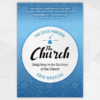What Does the Bible Have to Teach Our Churches about Multi-Ethnic Unity?
No time in my 30 years of ministry has been as complicated as the last few months. Conflicts over race and politics in the middle of a tumultuous pandemic have presented innumerable pastoral challenges.
Given these difficulties, my church’s elders decided we wanted to spend time intentionally shepherding our people to think rightly about our identity as a gospel community as well as our responsibility to one another and the world in these divided times. One way we did that was by preaching a sermon series highlighting four texts on our covenant relationship as they applied to race, ethnicity, and God’s purposes in the gospel.
Perhaps, pastor, you might consider doing something similar.
THE TEXTS
The four texts we chose were Deuteronomy 4, Amos 5, Ephesians 2, and Revelation 7. I want to briefly explain these texts below.
Deuteronomy 4
In Deuteronomy 4 God establishes a gospel community by his power, presence, and word. As his covenant people, God intended for Israel to testify about him to the watching world. Think of them as a “fishbowl community” comprised of cultural, political, judicial, and economic structures that testified to the presence of God and his unique wisdom. If the community failed to live up to their purpose by embracing idolatry, well, then they would no longer be a very good fishbowl.
Sadly, Israel’s idolatry prevented the nations from seeing the God of Israel as worthy of adoration and devotion. You remember Solomon, the wisest king in history who became a common idolater at his death. His son, the foolish king Rehoboam, divided the kingdom. Jeroboam, son of Nebat, took ten tribes and cultivated the life of the northern Israel around idol worship in order to secure his reign (1 Kings 12:16–33). By the eighth century, Israel’s religion was nothing more than pagan idol worship oriented around the throne in Samaria. In response to their wickedness, God sent prophets to call his people back to repentance—prophets like Amos.
Amos 5
Perhaps no biblical book provides more insight into the tragedy of idolatry than Amos. This prophet show us that strife and discord in a community ultimately comes from embracing idolatry and rejecting God’s covenant.
In Amos’s time, God’s people echoed the cultural realities of the nations around them. They immersed themselves in politically sanctioned idolatry. This point appears most clearly when Amaziah, a high priest, prohibits Amos from prophesying at Bethel, calling it the “King’s sanctuary” and the “temple of the kingdom” (Amos 7:12–13). Not only did this priest squelch the prophetic word, he forgot to mention the name of God, whom they claimed lived in the temple.
God had redeemed his people with his power. He had dwelt in their midst. He had sustained and shaped them by his word. But now he was irrelevant to Israel, not even meriting a mention in conjunction with the temple.
In the face of such idolatry, however, Amos offers hope. Before the high priest censured Amos, the prophet called on Israel to abandon their idolatry and let “justice pour down like waters and righteousness like an ever-flowing stream” (Amos 5:24). He called on Israel fulfill their calling as the God-created community that “walks in the way of the Lord doing justice and righteousness” (Gen. 18:19) and bears witness to his presence and wisdom to the nations (Deut. 4:5–7).
Further, Amos 9:11–12 looks forward to the restoration of the Davidic throne. When we get to the New Testament, the apostles show us how this promise includes embracing Gentiles as part of God’s people. The coming Davidic kingdom would be a multiracial, supra-ethnic community formed around the new David (Acts 15:13–19). No longer would the fishbowl community remain in the Ancient Near East. It would explode outward and become a global, multi-ethnic kingdom that declares the “excellencies of him who called us all together out of darkness into his marvelous light” (1 Pet. 2:9–10).
Ephesians 2
Ephesians 2 gives us a glimpse of this reconciled, multi-ethnic community as a reverberation of the gospel. Now that the covenant people were multiethnic, so too were the covenant responsibilities.
Paul begins by reminding the Ephesians of who they were before Christ save them: dead in sin, slaves to sin, strangers to the covenant, and without God in the world. Yet God, in his mercy, made them alive in Christ apart from any merit on their part. They are God’s workmanship created for good works in Christ.
A healthy Christian community must always remember both what they once were and what they’re now becoming together.
Paul then rehearses God’s magnificent redemptive assault on the dividing wall between Jew and Gentile. He reminds the Ephesians that God has brought them near, not just to himself, but also to one another by the blood of Christ. He’s made them into “one new man.” Further, bound by their new life in Christ, God continues to shape all the redeemed, regardless of their ethnicity, by his continued power, presence, and word into a glorious temple.
This supra-ethnic “fishbowl community” never loses its multiple ethnicities even as it lives out its new identity as those devoted to Christ. This testimony openly declares that all kings and cultures have been found wanting in light of the death, resurrection, and reign of Christ. Jesus is the King who has not only communicated to us the love of the triune God but has caused us to love one another as family. It’s his life, death, and resurrection that fuels and defines our multi-ethnic community and mission.
Revelation 7
The glorious culmination of this supra-racial community appears in Revelation 7 when all God’s people are gathered to proclaim Christ’s excellence. The first thing that John sees is heaven’s ethnic diversity. People from every tribe, tongue, and nation are finally all united as one—and now they sing to the glory of the Lamb and feast to his power, his presence, and his living word.
The promise to Abraham in Genesis 12 has now become a reality. This gathering no longer hungers, thirsts, or suffers. God provides for all of their needs, he wipes tears from their eyes, and he assures them that he, their shepherd king, is forever beside them. So they collectively sing loud and long to God and to the Lamb.
In Revelation 7, the eschatological hope of Abraham’s promise—a global, supra-ethnic, fishbowl community—is now complete.
THINKING ABOUT HOW TO BE GOSPEL COMMUNITY
That’s the 45,000-foot view of four important biblical passages. More could be said, of course. But the above suffices to rough out a broad outline of what the Bible teaches about such a difficult and sadly fraught topic.
I confess: the elders of my church are still struggling with what to do next. After all, we’re a predominantly white church. What steps should we take to reflect this vital, multi-ethnic gospel testimony?
We don’t know how to fully answer that. But we have asked ourselves a few questions that I believe will help us move forward:
- How should the multi-ethnic vision of Revelation 7 affect those who pastor in a culture where white people are the majority?
- Are we intentionally and sympathetically listening to people of color in our congregation share their experiences and needs?
- Are we modeling discernment as we listen well to outside voices?
- Is our local church so rooted in the gospel that we can understand our two main political parties without being owned by either and resisting what’s wicked in each? An inability to see Christianity distinct from either political party indicates a certain kind of state idolatry—not unlike Israel.
Hopefully, these passages and the questions they evoke will propel us to become the fishbowl community into which the nations can look and clearly see tangible, gospel-centered love in a world that so desperately needs it.







